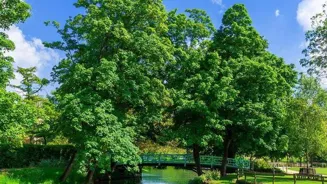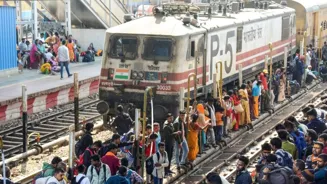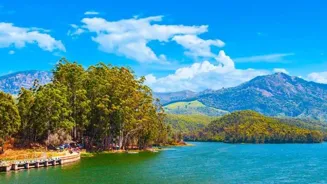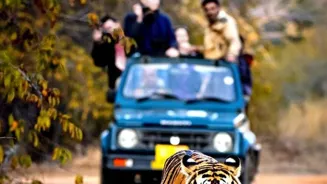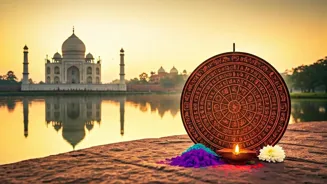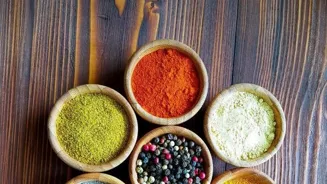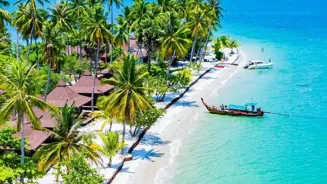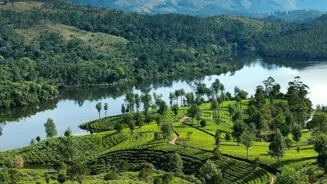Discover the vibrant cultural tapestry of India through 10 unique festivals! Immerse in the rich traditions and customs. Explore now!
India, a land famed for its incredible array of cultures, traditions,
and religions, offers a kaleidoscope of festivals throughout the year. Each festival is a unique expression of local customs, beliefs, and history, offering a fascinating glimpse into the heart of India.
From vibrant celebrations of harvest to spiritual gatherings, these festivals invite everyone to participate and experience the country's rich heritage. If you're looking to immerse yourself in the true spirit of India, here are 10 unique cultural festivals you absolutely must experience:
Hornbill Festival, Nagaland
Known as the "Festival of Festivals," the Hornbill Festival in Nagaland is a week-long extravaganza showcasing the diverse tribal cultures of the state.
Named after the revered Hornbill bird, this festival brings together various Naga tribes to celebrate their unique traditions through music, dance, food, and art. Visitors can witness colorful tribal dances, traditional sports, indigenous games, and a vibrant showcase of Naga handicrafts.
The festival is a great way to understand the unique culture, heritage, and way of life of the Naga people. It promotes inter-tribal harmony and preserves the vibrant cultural identity of Nagaland. It takes place every year in the first week of December.
The Hornbill festival provides insights into the rich heritage.
Losar Festival, Ladakh
Losar, the Tibetan New Year, is celebrated with great enthusiasm in Ladakh. The festival marks the beginning of the new year according to the Tibetan lunar calendar.
Monasteries are decorated with colorful prayer flags, and people participate in traditional ceremonies, dances, and cultural performances. The atmosphere is filled with festive cheer and spiritual fervor. Locals wear traditional clothes, offer prayers in monasteries, and exchange gifts and sweets.
The Losar Festival is a time for family reunions, community gatherings, and spiritual reflection. Visitors can experience the unique culture of Ladakh and enjoy the warm hospitality of the locals. It is a spectacle celebration of traditions.
Thrissur Pooram, Kerala
Thrissur Pooram is arguably the most spectacular temple festival in Kerala. It is a grand procession of decorated elephants, accompanied by traditional music and vibrant displays of fireworks.
The festival takes place at the Vadakkunnathan Temple in Thrissur and attracts thousands of devotees and tourists. The main attraction of the festival is the parade of elaborately decorated elephants carrying deities from various temples in Thrissur.
The rhythmic beats of the percussion instruments, the dazzling fireworks, and the devotional atmosphere create an unforgettable experience. It showcases the rich artistic and religious heritage of Kerala. The festival highlights traditions.
Hemis Festival, Ladakh
Another prominent festival in Ladakh, Hemis Festival is celebrated at the Hemis Monastery, one of the largest and most important monasteries in the region. The festival commemorates the birth anniversary of Guru Padmasambhava, the founder of Tibetan Buddhism.
Monks dressed in colorful robes and masks perform traditional dances representing the victory of good over evil. The intricate costumes, the mesmerizing music, and the spiritual atmosphere create a captivating spectacle.
The main highlight of the festival is the Cham dance, a sacred masked dance performed by the monks. The Hemis Festival offers a glimpse into the rich religious and cultural heritage of Tibetan Buddhism. It is very enjoyable.
Rann Utsav, Gujarat
The Rann Utsav is a unique desert festival celebrated in the Great Rann of Kutch, Gujarat. It is a celebration of the region's culture, art, and music. During the festival, the white desert comes alive with colorful tents, cultural performances, and various activities.
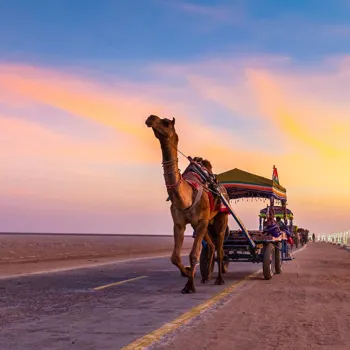
Visitors can experience the local cuisine, participate in adventure activities like hot air ballooning and camel safaris, and enjoy traditional music and dance performances.
The Rann Utsav is a fantastic opportunity to witness the beauty of the desert landscape and immerse oneself in the vibrant culture of Gujarat. It is something you do not want to miss.
Pushkar Camel Fair, Rajasthan
The Pushkar Camel Fair is one of the largest camel fairs in the world, held annually in Pushkar, Rajasthan. It is a vibrant and colorful spectacle, attracting traders, farmers, and tourists from all over.
The fair is primarily a livestock trading event, with thousands of camels, horses, and cattle being bought and sold. However, it is also a cultural extravaganza, featuring traditional music, dance, and various competitions.
Visitors can witness camel races, participate in turban-tying contests, and enjoy the festive atmosphere. The Pushkar Camel Fair offers a unique insight into the rural life and traditions of Rajasthan. It brings in tourist every year.
Goa Carnival
A legacy of the Portuguese rule, the Goa Carnival is a vibrant and lively festival celebrated with great enthusiasm in Goa. It is a four-day-long celebration filled with music, dance, parades, and colorful floats.
The streets of Goa come alive with revelers dressed in colorful costumes, dancing to the beats of traditional Goan music. The Carnival is a time for merrymaking, feasting, and enjoying the carefree spirit of Goa.
The main highlight of the festival is the parade led by King Momo, who declares "eat, drink and be merry" for the duration of the Carnival. It is must see event for all tourists.
Bihu Festival, Assam
Bihu is a set of three important festivals celebrated in Assam, each marking a different phase of the agricultural cycle. Rongali Bihu, also known as Bohag Bihu, is the most important of the three and marks the beginning of the Assamese New Year and the spring season.
Kongali Bihu, also known as Kati Bihu, is celebrated in October and marks the end of the sowing season. Bhogali Bihu, also known as Magh Bihu, is celebrated in January and marks the end of the harvest season.
Each Bihu festival is celebrated with unique rituals, traditional music, dance, and feasts. It is an integral part of Assamese culture.
Onam, Kerala
Onam is a major harvest festival celebrated in Kerala, marking the homecoming of the legendary King Mahabali.
The festival is celebrated with great enthusiasm and involves a variety of cultural activities, including elaborate floral decorations (Pookalam), traditional dances (Thiruvathira Kali), boat races (Vallamkali), and grand feasts (Onasadya).
People wear new clothes, visit temples, and participate in various cultural programs. The atmosphere is filled with joy and festive cheer. Onam is a celebration of Kerala's rich cultural heritage and its connection to agriculture. It takes place every year for 10 days.
Dussehra, Pan India
Dussehra celebrates the victory of good over evil. It is celebrated in different ways across India, but the underlying theme remains the same. In North India, it marks the victory of Lord Rama over Ravana, the ten-headed demon king.
In West Bengal, it is celebrated as Durga Puja, honoring the goddess Durga's victory over the demon Mahishasura. Effigies of Ravana are burnt, symbolizing the destruction of evil forces. Dussehra is a time for family gatherings, religious observances, and cultural performances.
The festival is celebrated with great pomp and show, with processions, fairs, and fireworks. It is celebrated every year.
These ten festivals offer only a glimpse into the diverse and vibrant cultural landscape of India. Experiencing these festivals firsthand is an opportunity to immerse yourself in the rich traditions, customs, and beliefs of this incredible country. So, plan your trip, pack your bags, and get ready to celebrate the spirit of India!
India is a land of vibrant festivals. Every festival in India is celebrated for different reasons. Festivals attract people to visit different parts of the country. People from abroad can visit places in India. They enjoy the traditions and their culture. Some festivals are region restricted.
There are countless festivals in India. Each festival is unique. They each have their own significance. They include a variety of cultural activities. The cultural activities provide a glimpse of Indian heritage. Festivals mark important occasions.
Religious events shape festivals, boost tourism, preserve culture
Religious events influence most of the festivals. They mark harvest, religion, and traditions. They are a big source of Indian tourism. It is important to preserve culture and traditions. People should come forward to participate. This will make them remember the culture.

